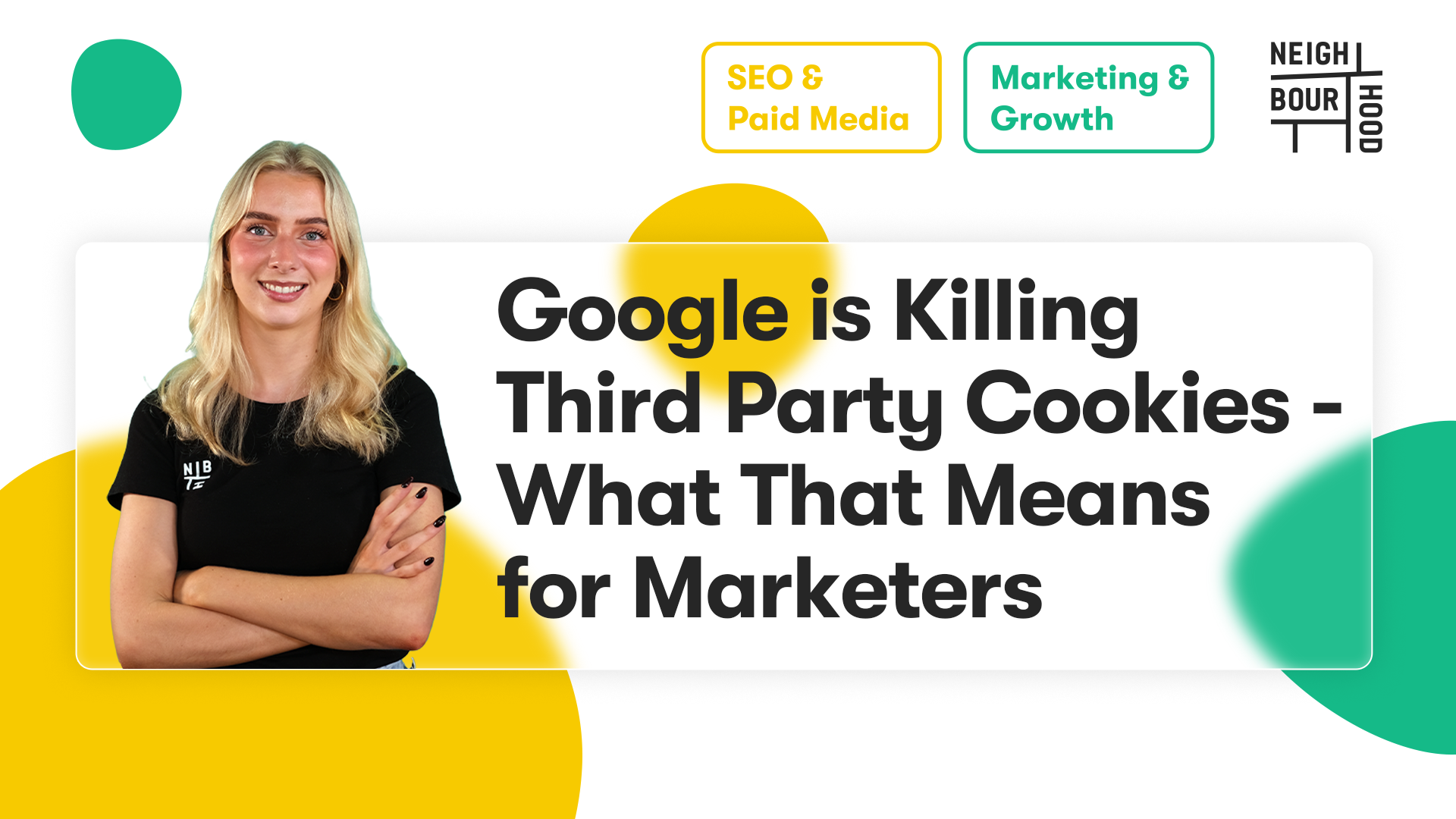Unless you've been living under a rock, I'm sure you've been made aware of Google's decision to make a fairly monumental change to its Chrome browser, and if not, here's a heads up! Over the next two years, it plans to phase out support for third-party cookies *queue dramatic music*.
To refresh, third-party cookies are the little pieces of code that are set when you're using one website, but that website has embedded javascript from a different website and the javascript sets a cookie ... buzzword soup or what? Basically, third party cookies are ads set by a website other than the one you are currently on. For example, you could be on a website looking at holidays with your wife where you secretly know you're going to propose, and Chrome could chuck up ads of engagement rings you've been looking at from another site. Surprise!
So while it might be a little inconvenient for the sneaky shopper, marketers have relied on third-party tracking cookies for the last 25 years to track consumer behaviour online. Nearly all ad-tech and mar-tech platforms use cookies for targeting, retargeting, display advertising and behavioural marketing in general. So as you can imagine, marketers are a little bummed about Google Chrome's decision, but smiling through the pain knowing that it'll at least take two years to come into affect - Safari and Firefox weren't nearly as courteous when they pulled the plug!
A statement from the 4A’s and ANA responding to Google’s announcement suggests that this is something we should definitely be flapping about, saying that "it may choke off the economic oxygen from advertising that startups and emerging companies need to survive". Larger brands aren't so vulnerable and will be able to better absorb changes like this, but if you're still finding your feet and counting on PPC advertising to reach people, this will sting a little.
Welcome to the Cookie-pocalypse
So why is Chrome going cookie-free? Google wants to arm its users with privacy control, but at the same time not stop advertisers from targeting consumers with relevant ads - saying, "... users are demanding greater privacy — including transparency, choice and control over how their data is used — and it’s clear the web ecosystem needs to evolve to meet these increasing demands ... Some browsers have reacted to these concerns by blocking third-party cookies, but we believe this has unintended consequences that can negatively impact both users and the web ecosystem ... We believe that we as a community can, and must, do better."
The solution? In the cookie-less future, Google wants ad targeting, measurement and fraud prevention to happen according to the standards set by its 'Privacy Sandbox', a system where cookies are replaced by five application programming interfaces. Advertisers will use it to receive aggregate data about issues like conversion (how well their ads are performing) and attribution (which entity is credited for a purchase). Despite its fancy name, it represents an alternative pathway that Google is providing for the ad industry to take, relying on anonymised signals (not cookies) within a user's Chrome browser to profit from that user's browsing habits.
So while the death warrant for Chrome's cookies spells the end of ad super-relevancy, it shouldn't spell the end for your entire marketing efforts - it's not all doom and gloom!
How to effectively market online without cookies...
While the whole Sandbox situation is still in limbo and before cookies go entirely extinct, let's get savvy with some equally effective tactics so you can still reel in new customers and connect with your audience in the meantime!
1. Contextual Advertising
The next best thing to third-party cookies is context-based advertising, a strategy that serves ads on a website that are relevant to that pages' content. It differs to something like behavioural advertising, which might target someone like me (who researches a lot about marketing software for work), with some software I should download. While that's great, and sure, I'll tell my boss about it, I'm really far more interested in ... shoes. With contextual targeting, the ads you see are based on the content you're actively looking at rather than your overall behaviour profile. So while I'm online shopping, I'll see contextual ads for a dress that goes scarily well with my new shoes - improving the overall click-through rate.
2. People-based targeting
In a nutshell, people-based marketing means you're collecting both online (where and how your consumers prefer to engage with media), offline (demographic, geographic, and psychographic traits) and mobile (which mobile device is tied to each user) data, to create a full, 360 degree profile of that person and can recognise them on all of the different devices they use. When you're using people-based marketing, you're targeting actual, verified people, not an anonymised mobile ID or a cookie.
So, while a big change is coming in 2022, see this is an opportunity to reset your targeting and measurement paradigm, implement and test some more effective data sources and see how it works for you!


